MATERNITY NURSING > TEST BANKS > NURSING MATERNITY TEST BANK WITH 150 Q&A’S WITH RATIONALES LATEST 2024/2025 (GUARANTEED PASS) |RAT (All)
NURSING MATERNITY TEST BANK WITH 150 Q&A’S WITH RATIONALES LATEST 2024/2025 (GUARANTEED PASS) |RATED A+
Document Content and Description Below
NURSING MATERNITY TEST BANK WITH 150 Q&A’S WITH RATIONALES LATEST 2024/2025 (GUARANTEED PASS) |RATED A+ 1. The nurse is counseling a couple who has sought information about conceiving. The couple... asks the nurse to explain when ovulation usually occurs. Which statement by the nurse is correct? o A. Two weeks before menstruation. o B. Immediately after menstruation. o C. Immediately before menstruation. o D. Three weeks before menstruation. Correct Answer: A. Two weeks before menstruation Ovulation occurs 14 days before the first day of the menstrual period (A). Although ovulation can occur in the middle of the cycle or 2 weeks after menstruation, this is only true for a woman who has a perfect 28-day cycle. For many women, the length of the menstrual cycle varies. Option B: After the follicle releases its egg, it changes into the corpus luteum. This structure releases hormones, mainly progesterone and some estrogen. The rise in hormones keeps the uterine lining thick and ready for a fertilized egg to implant. If the woman does get pregnant, her body will produce human chorionic gonadotropin (hCG). This is the hormone pregnancy tests detect. It helps maintain the corpus luteum and keeps the uterine lining thick. If the woman doesn’t get pregnant, the corpus luteum will shrink away and be resorbed. This leads to decreased levels of estrogen and progesterone, which causes the onset of the period. The uterine lining will shed during this period. Option C: The menstrual phase is the first stage of the menstrual cycle. It’s also when the woman gets her period. This phase starts when an egg from the previous cycle isn’t fertilized. Because pregnancy hasn’t taken place, levels of the hormones estrogen and progesterone drop. The thickened lining of the uterus, which would support a pregnancy, is no longer needed, so it sheds through the vagina. During this period, there is a release of a combination of blood, mucus, and tissue from the uterus. Option D: During each menstrual cycle, an egg develops and is released from the ovaries. The lining of the uterus builds up. If a pregnancy doesn’t happen, the uterine lining sheds during a menstrual period. Then the cycle starts again. 2. The nurse instructs a laboring client to use accelerated blow breathing. The client begins to complain of tingling fingers and dizziness. Which action should the nurse take? A. Administer oxygen by face mask. B. Notify the health care provider of the client's symptoms. C. Have the client breathe into her cupped hands. D. Check the client's blood pressure and fetal heart rate. Correct Answer: C. Have the client breathe into her cupped hands. Tingling fingers and dizziness are signs of hyperventilation (blowing off too much carbon dioxide). Hyperventilation is treated by retaining carbon dioxide. This can be facilitated by breathing into a paper bag or cupped hands. Option A: Giving oxygen is inappropriate because the carbon dioxide level is low, not the oxygen level. Option B: Before notifying the healthcare provider, the nurse may first intervene by having the client breathe into her cupped hands. If the client’s situation does not improve, the nurse may notify the physician. Option D: The client’s blood pressure and fetal heart rate are not related to the low levels of carbon dioxide in her body. It is due to blowing off too much carbon dioxide while using blow breathing exercises. 3. When assessing a client at 12 weeks of gestation, the nurse recommends that she and her husband consider attending childbirth preparation classes. When is the best time for the couple to attend these classes? A. At 16 weeks of gestation. B. At 20 weeks of gestation. C. At 24 weeks of gestation. D. At 30 weeks of gestation. Correct Answer: D. At 30 weeks of gestation. Learning is facilitated by an interested pupil. The couple is most interested in childbirth toward the end of the pregnancy when they are beginning to anticipate the onset of labor and the birth of their child. At 30 weeks, is closest to the time when parents would be ready for such classes. Option A: This would not be the best time during pregnancy for the couple to attend childbirth education classes. At these times they will have other teaching needs. Early pregnancy classes often include topics such as nutrition, physiologic changes, coping with normal discomforts of pregnancy, fetal development, maternal and fetal risk factors, and evolving roles of the mother and her significant others. Option B: At 20 weeks gestation, the couple may have an ultrasound to check the fetus’ gender. This is also the time when the scan may show the beating of the fetus’ heart, the curve of his spine, or his arms and legs kicking. Option C: During the 24th week of gestation, the couple may think about where they should have the baby; learn about the signs of preterm labor; and how they could introduce the new baby to his siblings. [Show More]
Last updated: 8 months ago
Preview 5 out of 130 pages

Loading document previews ...
Buy this document to get the full access instantly
Instant Download Access after purchase
Buy NowInstant download
We Accept:

Reviews( 0 )
$28.00
Can't find what you want? Try our AI powered Search
Document information
Connected school, study & course
About the document
Uploaded On
Oct 12, 2024
Number of pages
130
Written in
Additional information
This document has been written for:
Uploaded
Oct 12, 2024
Downloads
0
Views
34




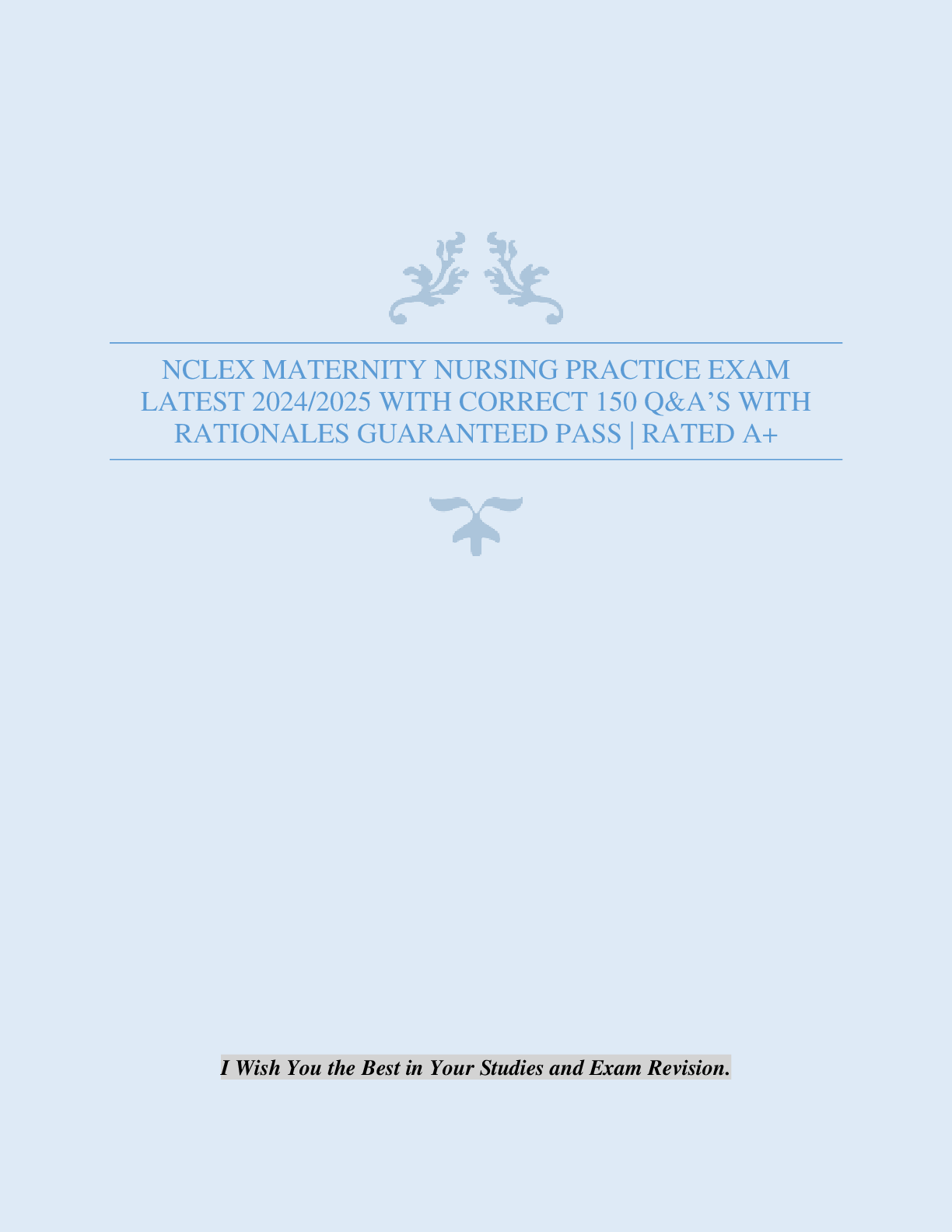
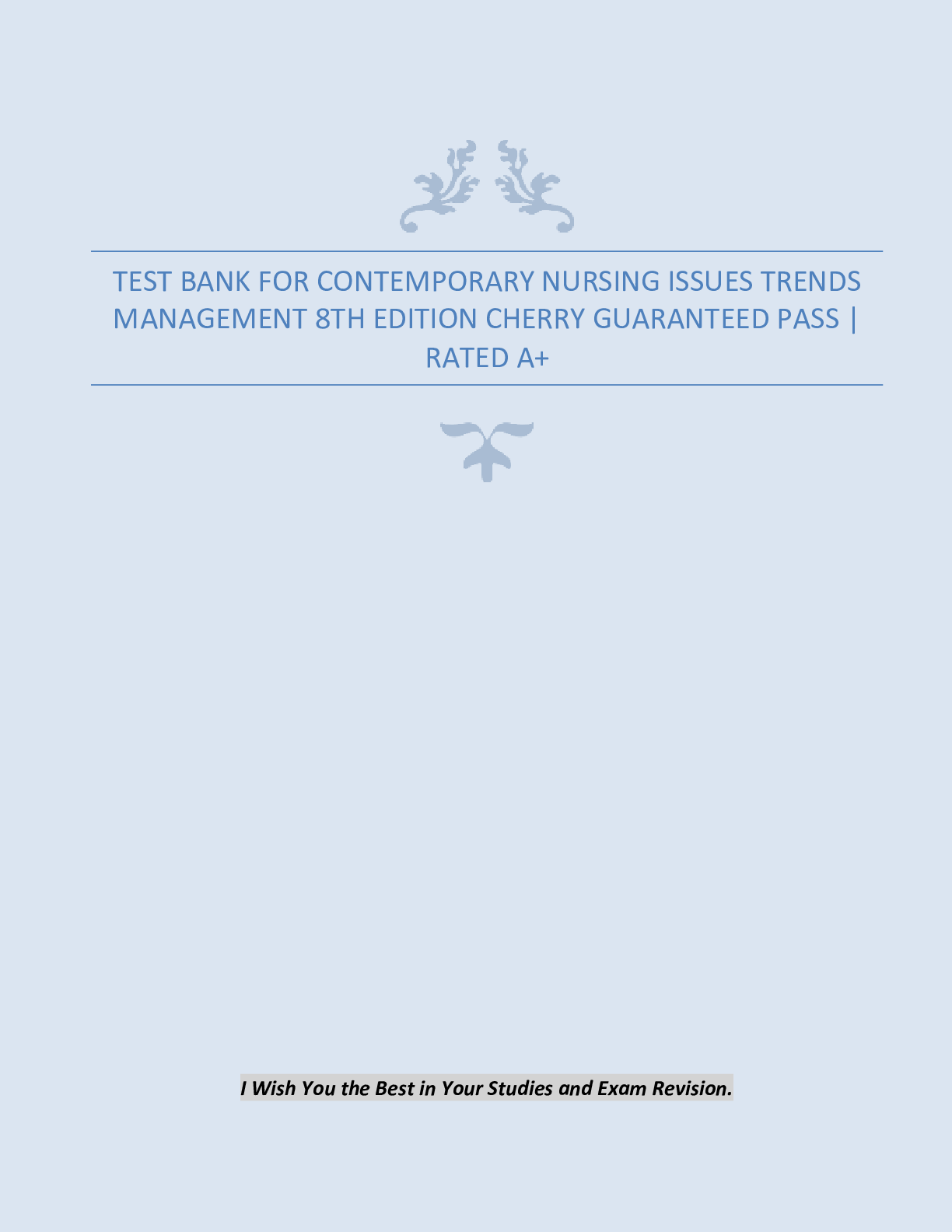



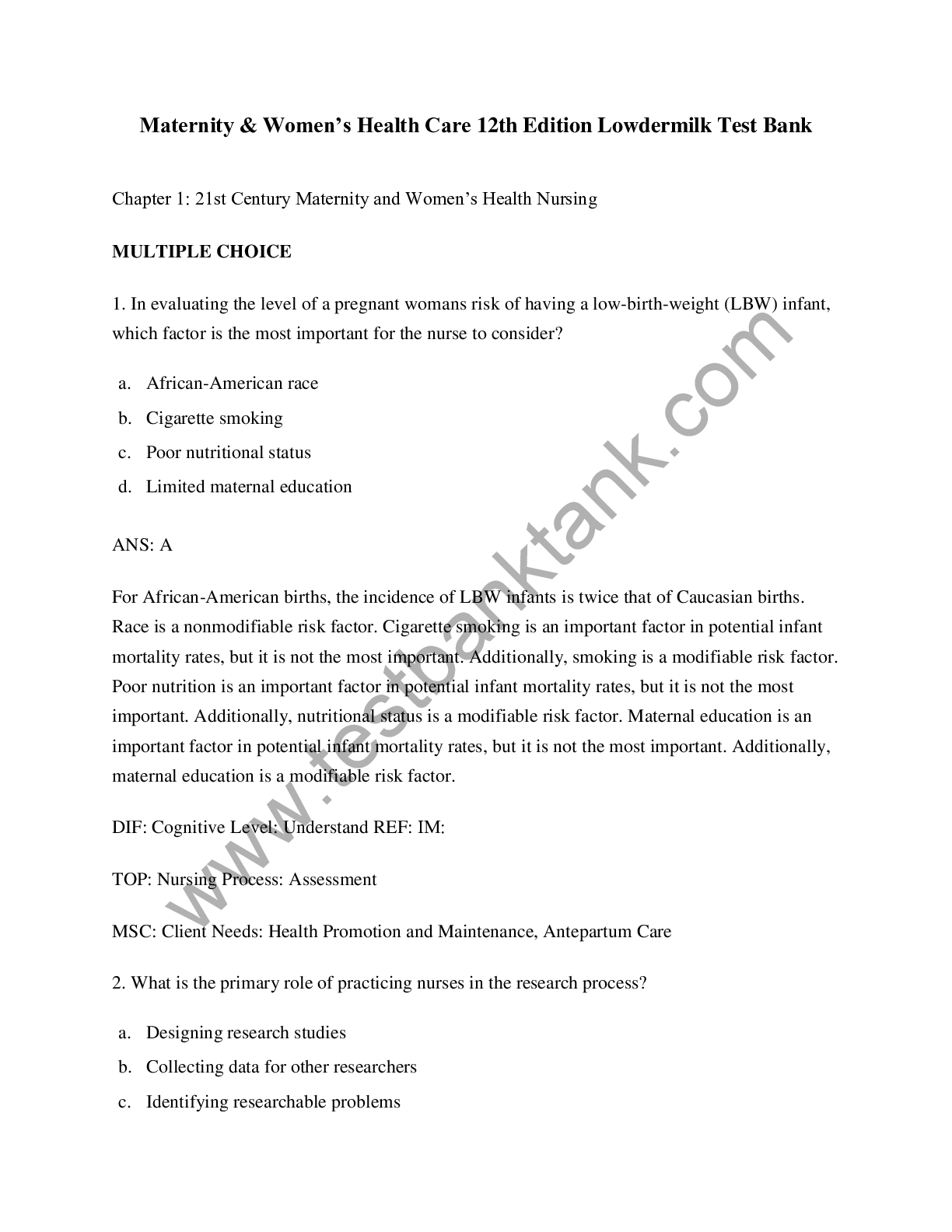
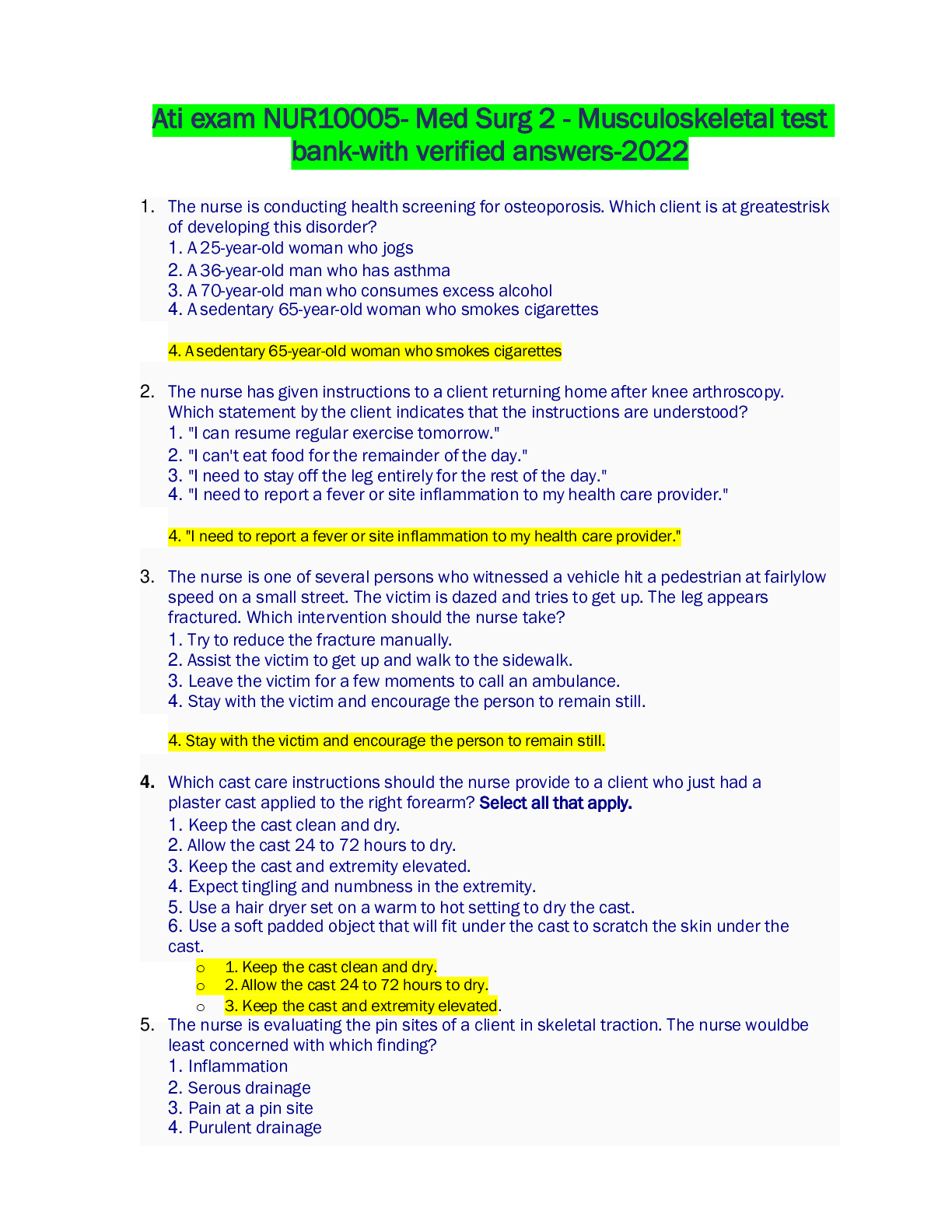


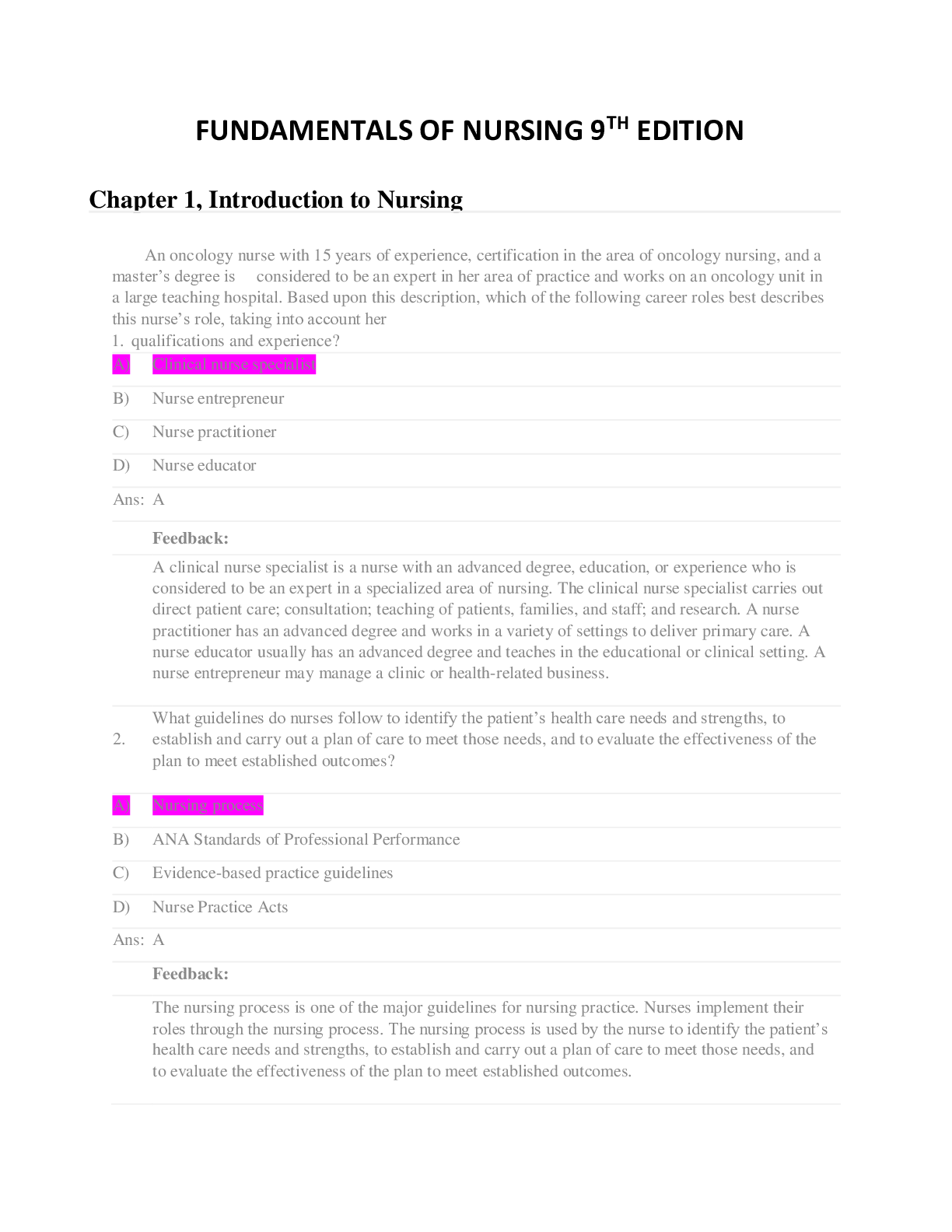
.png)


